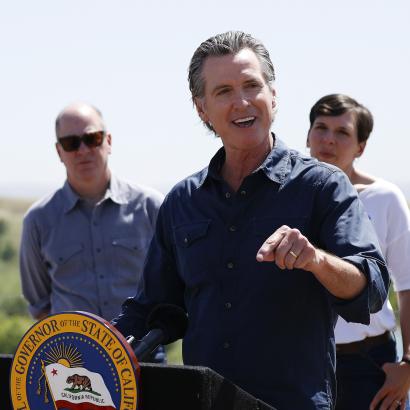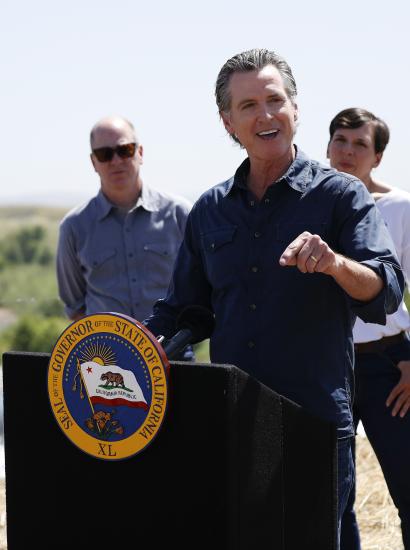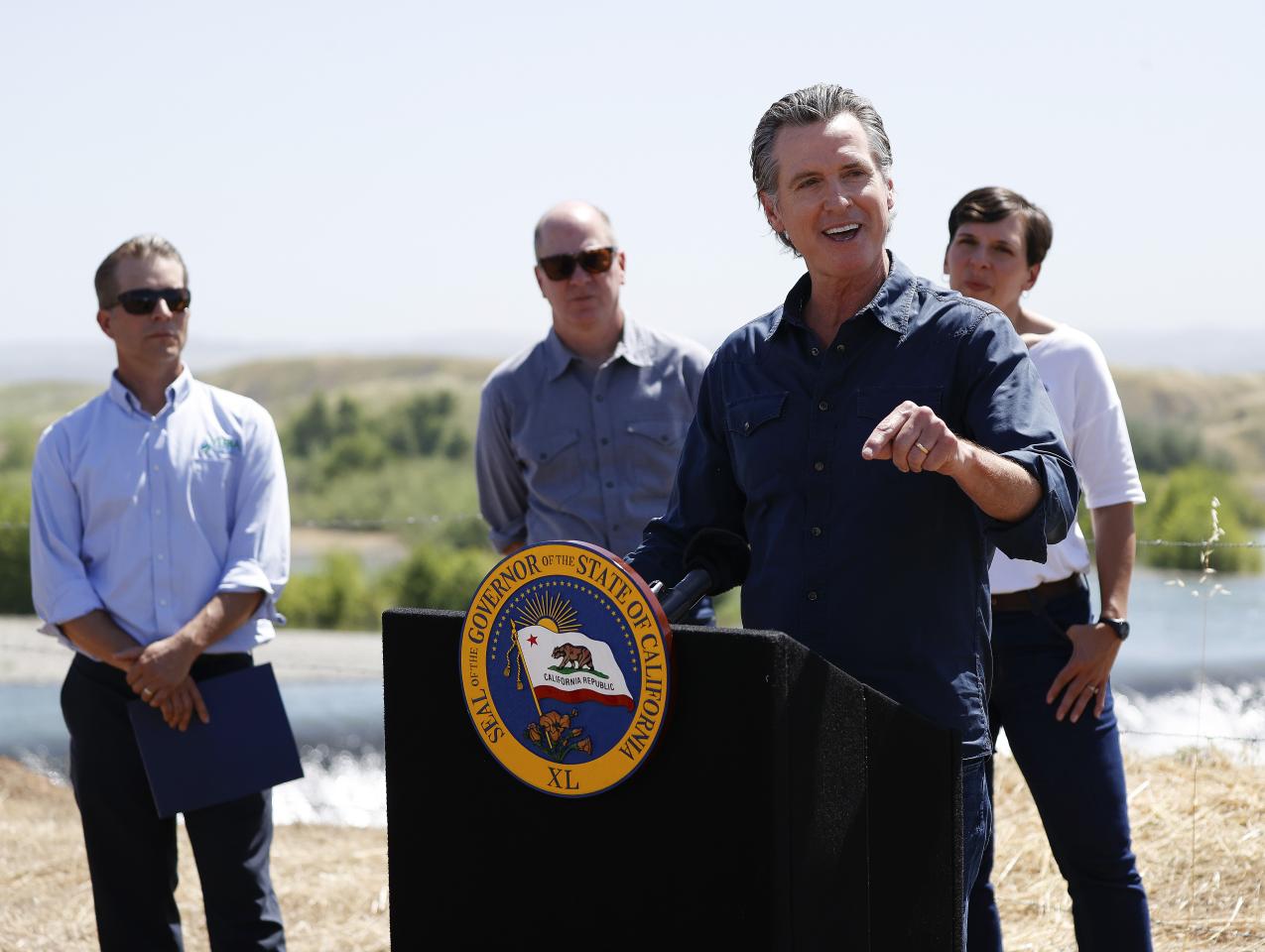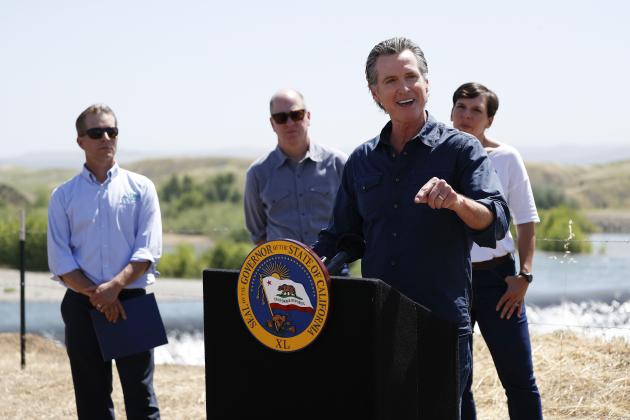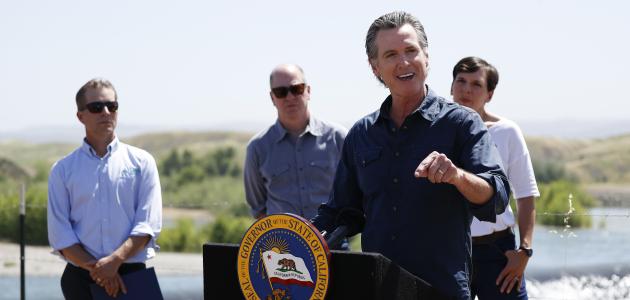Since winning a second term last November, California governor Gavin Newsom seems more focused on creating a national political stage for himself than addressing California’s economic problems. The range of such issues includes record homelessness and housing costs, deficient K–12 public schools, and record numbers of households and businesses leaving the state. But with over three years remaining in his second term, Newsom is developing a national political brand, one that could immediately morph into a national campaign should Joe Biden reverse his decision to seek a second term next fall.
Newsom attracted national headlines in 2021 when his approval ratings dropped substantially, reflecting his management of the California economy and school closures at the height of the COVID pandemic. Newsom faced a recall election that year, which he won easily but not until the state’s Democratic party created a fear campaign around Newsom’s major recall opponent, Larry Elder. This campaign was aided significantly by California’s mainstream media. A Los Angeles Times editorial went so far as to call Elder “the Black Face of White Supremacy” and to advise voters, “You have been warned.”
Newsom prevailed in the recall election with nearly 62 percent of the vote, which represents a stunning turnaround from his approval ratings, which were as low as 46 percent just six months before. A winning strategy had emerged, one that focused not on accomplishments or effective governance but on painting the opposition in the worst possible terms to create fear among voters.
This political strategy has continued and was front and center in Newsom’s second-term inauguration speech delivered earlier this year:
Red state politicians, and the media empire behind them, selling regression as progress, oppression as freedom. . . . Instead of finding solutions, these politicians void of any new ideas, pursuing power at any cost, prey upon our fears and paranoias. . . . They silence speech, fire teachers, kidnap migrants, subjugate women, attack the Special Olympics, and even demonize Mickey Mouse.
This was a non sequitur of an inaugural speech, as political issues in other states are largely irrelevant for California, where state Democrats have a supermajority in both legislative houses, all major statewide political offices are held by Democrats, and only 24 percent of voters are registered as Republican.
There was no discussion in Newsom’s speech of progress made toward the goals Newsom presented when he first ran for office in 2018. Newsom’s major campaign promise at that time was a “Marshall Plan” to create new housing in a state that likely has more regulatory roadblocks to construction than any other. But California housing starts are even lower today than they were when Newsom first took office. New housing construction in California is more than 40 percent below its level from around 20 years ago and nearly 60 percent below its level in the late 1980s. Now well into Newsom’s fifth year in office, California housing construction is roughly 85 percent below his first-term goal. At the time Newsom took office, housing was clearly the state’s main policy priority. It is hard to fathom that housing production could decline even further, but it has under Newsom’s watch.
Since his January inauguration, Newsom has continued his campaign against red-state politicians. In March, he created a $10 million political action committee, “Campaign for Democracy,” whose website states: “It’s time for Democrats to go on OFFENSE against Republicans who work overtime to take away our rights and dismantle our democracy.”
In April, Newsom traveled to Alabama, Mississippi, Arkansas, and Florida, where he visited with state Democrats and did photo ops at churches and schools. Why? NBC’s political director and moderator of Meet the Press explained Newsom’s visit as follows: “I think what’s in Gavin Newsom’s best interest is to be a national figure, to take the fight wherever things go.”
In early June, Newsom proposed a 28th constitutional amendment that would regulate guns. The passage of such an amendment is next to impossible, given that it requires 38 state legislatures to vote in its favor. But this proposal advanced Newsom’s national political presence significantly. Most major media outlets reported Newsom’s announcement, which his PAC followed with a fundraising solicitation, resulting in $4 million in new donations over two months.
Later in June, Newsom was interviewed by Fox TV host Sean Hannity, an appearance in which Newsom was judged to have excelled, according to several media outlets, including the San Francisco Chronicle and USA Today.
Newsom was confident and glib and quick during the interview, but his answers were short on substance and omitted key facts. This includes Newsom’s statement that he reduced San Francisco homelessness substantially when he was mayor, when in reality this was achieved in part by busing the homeless out of San Francisco.
This fact was omitted by Newsom for obvious political reasons. And homelessness today in San Francisco—and in the state—is higher than ever. California now has about 172,000 unhoused individuals. If this population were to comprise its own city, it would be about the same size as Salem, the capital of Oregon, and only slightly smaller than Akron, Ohio, the rubber capital of America.
When Hannity questioned Newsom about California’s economy, Newsom deflected on issues about taxes, high living costs, and the losses of people and businesses to other states to focus on venture capital, of all things. But venture capital is leaving the state as well, following tech businesses that are moving. More broadly, venture capital would seem to be far off the radar screens of the 34 percent of Californians whose incomes don’t cover the basic cost of living.
Newsom has consistently supported Joe Biden’s candidacy for a second term. But it would be unsurprising if Biden reconsidered that decision. Biden’s current approval rating is very low (40 percent), and 64 percent of voters believe Biden is too old to run for a second term. There is also the potential that Hunter Biden’s continuing legal troubles will negatively affect a second-term campaign for Joe Biden, particularly after last week’s news that Hunter, his business associates, and other Biden family members received over $20 million in payments from oligarchs in Russia, Kazakhstan, and Ukraine while Joe Biden was vice president.
Should Biden choose not to run for a second term, Newsom would almost certainly rise to the top of the list of potential Democratic candidates. This would put a recently announced debate between Newsom and Florida governor and Republican presidential candidate Ron DeSantis in a different light.
The upcoming debate with DeSantis is one that Newsom is certain to lose from the perspective of state economic policy, in which the states feature obvious diverging trends. While California has lost nearly 500,000 residents since 2020, Florida has gained nearly 650,000 residents. California is at or near the bottom of state rankings for tax burden and economic freedom, while Florida is at the top. Florida has much lower living costs and has only about one-tenth the number of unsheltered homeless people as California.
Perhaps the most damning comparison between the two states is that California’s K–12 education budget exceeds the entire state budget of Florida, yet Florida’s schoolkids perform higher in reading and mathematics than California’s students, based on federal standards.
While Newsom has been advancing his national presence, Californians are asking where he has been, including the editorial board of the San Francisco Chronicle:
When the Editorial Board endorsed Newsom’s re-election last year, we argued that “California’s problems are far too urgent to indulge our executive office being used as a campaign commercial.” We meant it. Newsom needs to get back to work in California—and focus on nitty-gritty policy details as much as flashy headlines.
The governor does need to get back to his day job, though I doubt it will make much of a difference for the millions of Californians who struggle each day. California’s problems are so deeply ingrained within a host of complex relationships—between the state’s Democratic party and powerful political interests who want to preserve the status quo—that it is hard to imagine any changes without a complete political reset. This is why California’s problems persist well into Gavin Newsom’s fifth year of being governor. This is why California’s problems worsen year after year, and why they will continue unabated for the rest of Newsom’s governorship, however long that may be.








